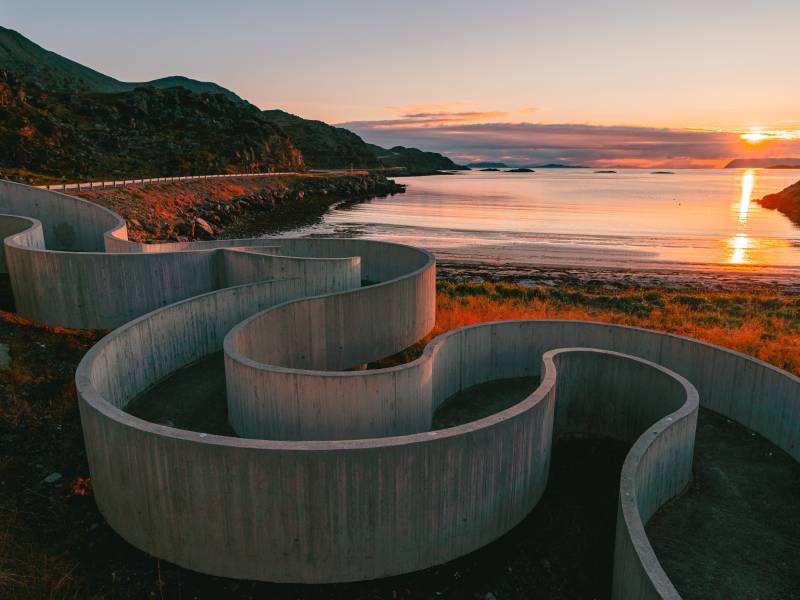
National tourist road Havøysund
Provided by:
Visit Hammerfest

Few stretches of road in the world can present such beautiful, varied, and spectacular nature as the National Tourist Road 889 between Kokelv, Storberget and Hammerfest. The journey alone is an experience in itself and combined with a round tour to Nordkapp or Hammerfest, it will be an unforgettable experience that will remain with you for the rest of your life. Parts of the road pass through deserted rocky landscapes, where you have the Nordic Sea on one side and rugged rock formations on the other. The landscape is raw and dramatic and both reindeer and sea eagles are a common sight. In this audio guide you will get to know about some of the places along the road, about spies, the resistance and the people, myths, and sagas from a bygone era. All of this you can experience through the comprehensive narration, pictures, and text as you approach the places of interest along the route. God tur!
Points of interest

#1
Introduction
Few stretches of road in the world can present such beautiful, varied, and spectacular nature as the National Tourist Road 889 between Kokelv, Storberget and Hammerfest. The journey alone is an experience in itself and combined with a round tour to Nordkapp or Hammerfest, it will be an unforgettable experience that will remain with you for the rest of your life. Parts of the road pass through deserted rocky landscapes, where you have the Nordic Sea on one side and rugged rock formations on the other. The landscape is raw and dramatic and both reindeer and sea eagles are a common sight. In this audio guide you will get to know about some of the places along the road, about spies, the resistance and the people, myths, and sagas from a bygone era. All of this you can experience through the comprehensive narration, pictures, and text as you approach the places of interest along the route. God tur!
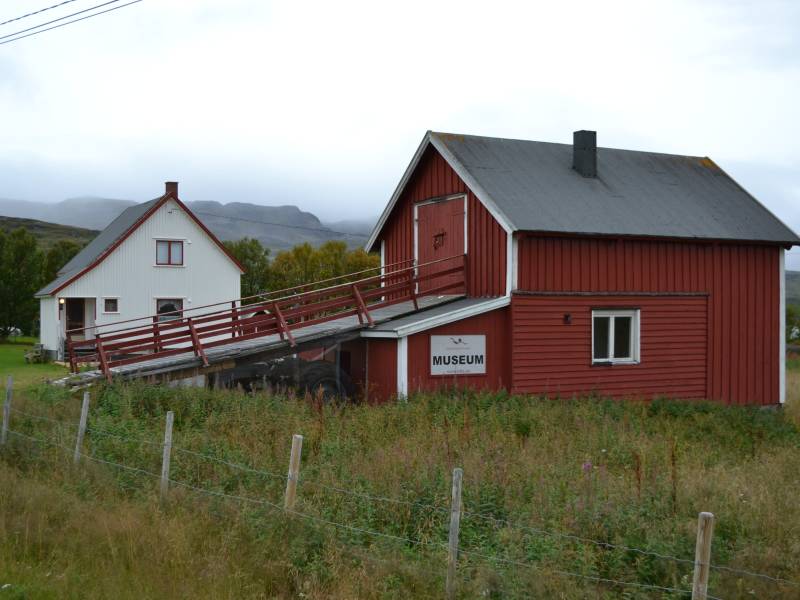
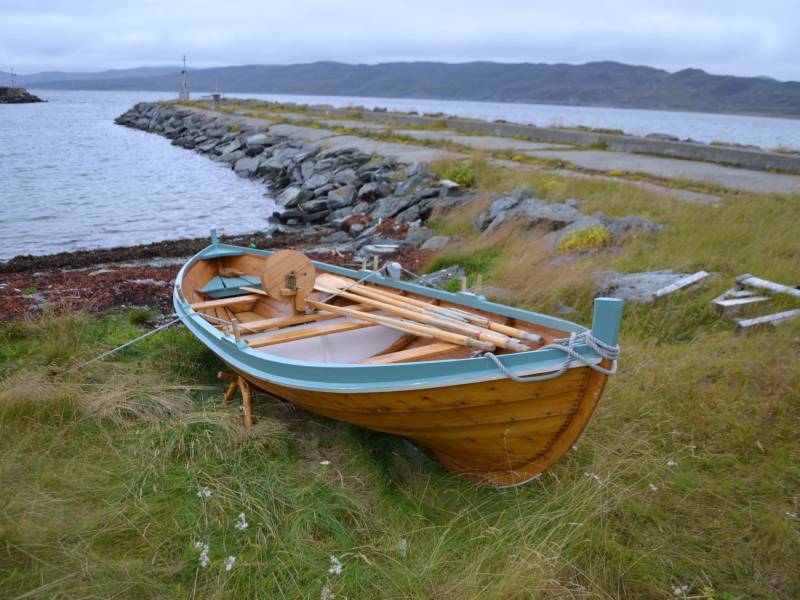
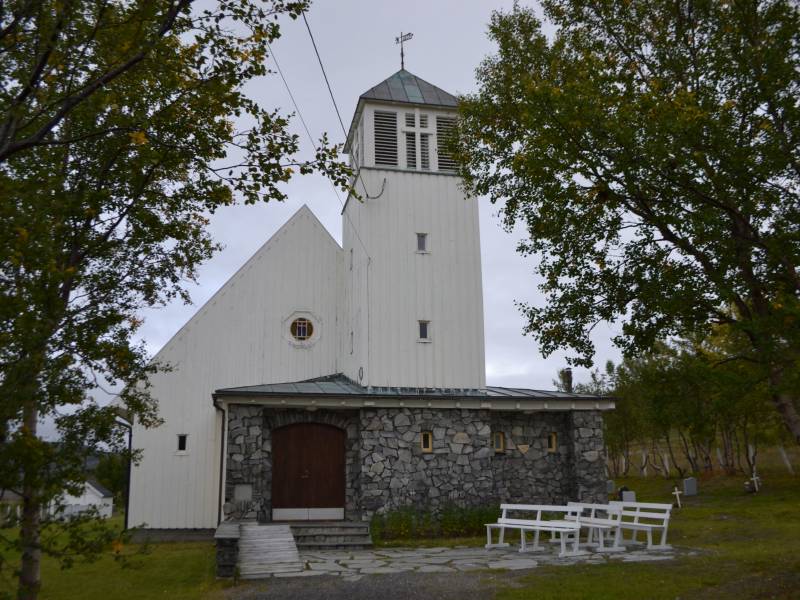
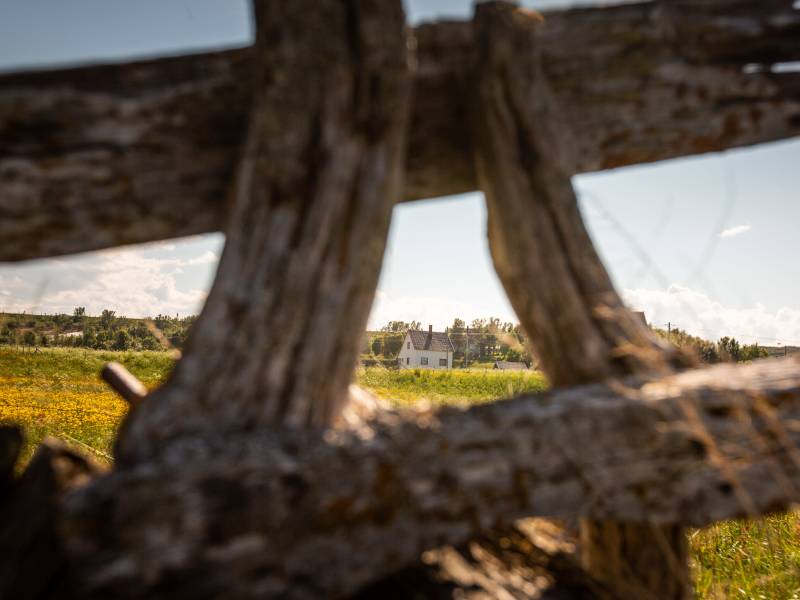
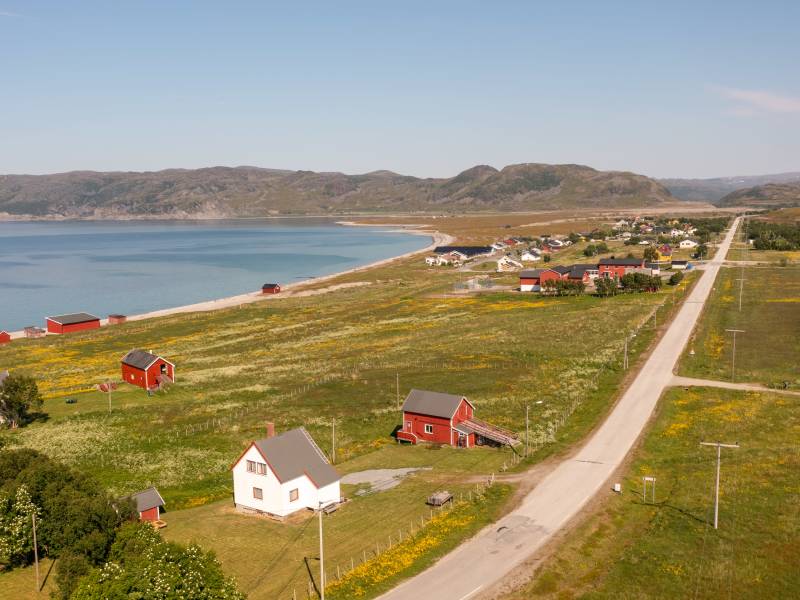
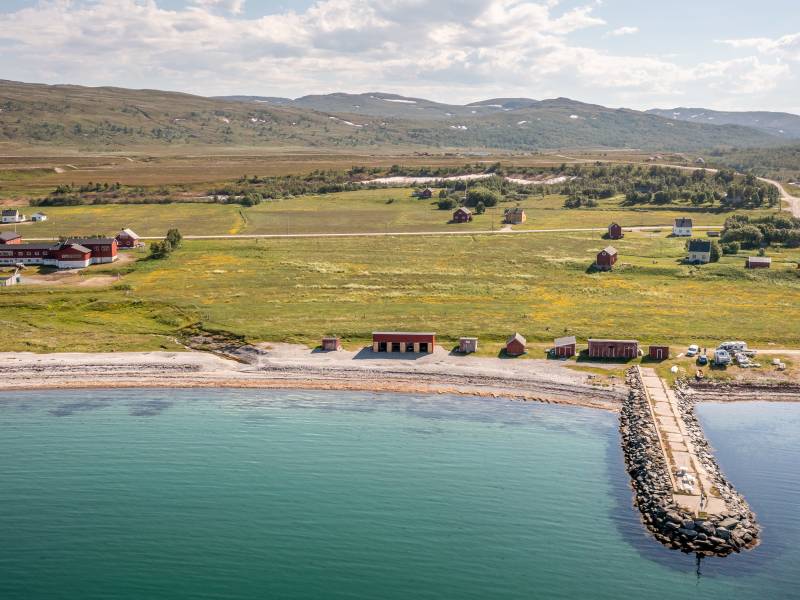
#2
Kokelv
Welcome to Kokelv! It was originally an old Sea Sami village, and although there are not so many of them left, the old traditions are well preserved in this village. The Sea Sami Museum in particular plays an important role in keeping the culture alive and is definitely worth a visit. Kokelv is a vibrant village community with most of the necessary facilities for a small community, a school, kindergarten, a shop, and a beautiful church. A visit to this area so far north means that you can experience everything from the midnight sun and light summer nights to the northern lights, winter storms, rainy days and occasionally even a heat wave from Russia, depending on what time of the year you visit. Many use the village as the starting point for the magical and beautiful trip on the national tourist road to Havøysund. Today, outdoor enthusiasts also stream into Kokelv on the hunt for exciting experiences. Both the mountains and fjords offer spectacular yet affordable adventures for both young and old. Here you can hire fishermen’s cottages and rowing boats, and the rich fishing grounds provide excellent fishing for both professional and leisure fishermen. Many are also drawn to the wild Kok River, to fish both salmon and trout.
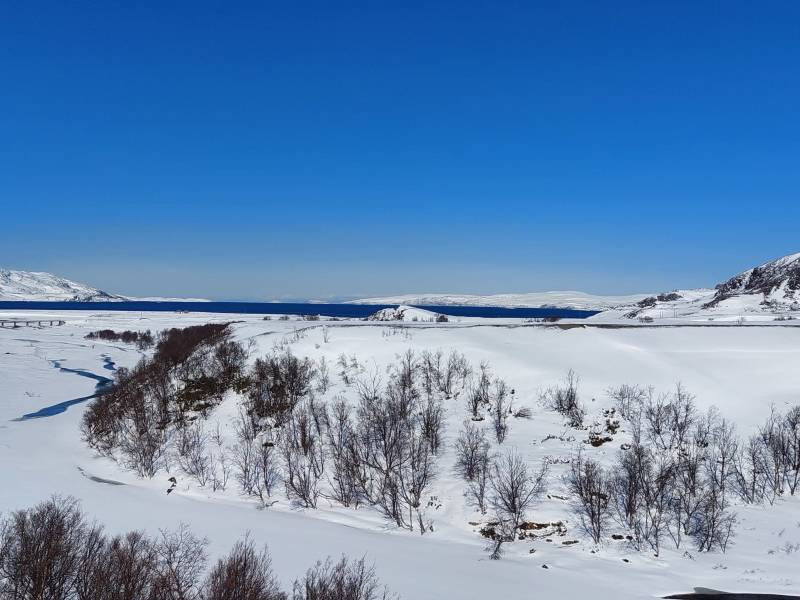
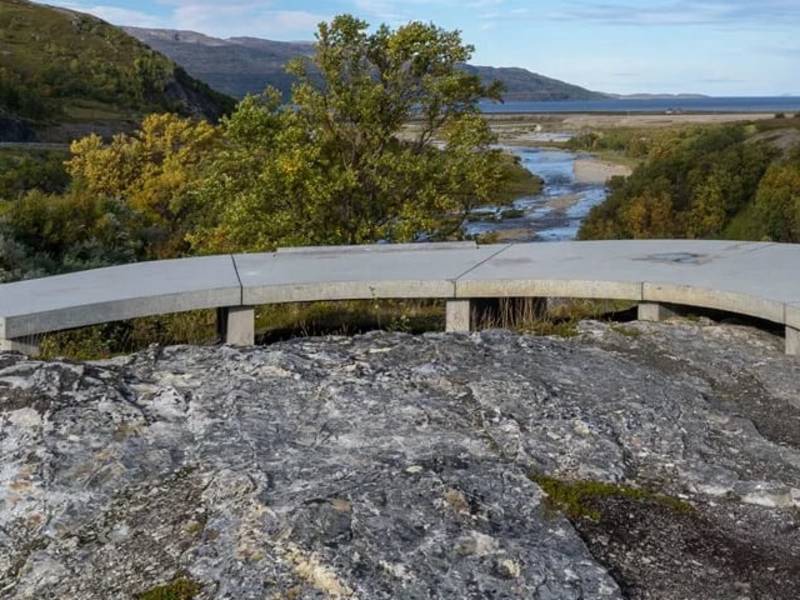
#3
Storberget
You have now arrived at the Storberget rest area and viewpoint which also represents the starting point of the National Tourist Road to Havøysund. The rest area is a part of the national effort to preserve old stretches of road and keep them accessible and attractive for future visitors. Here at the beautiful monument designed by Pushak architects, travellers get their first encounter with the fjord, the sea and the special nature that characterises this 66 km long stretch. The road to Havøysund is both fascinating and varied. The landscape is raw and dramatic, parts of the road run through desolate rocky landscapes with the Nordic Sea on one side and rugged rock formations on the other side.
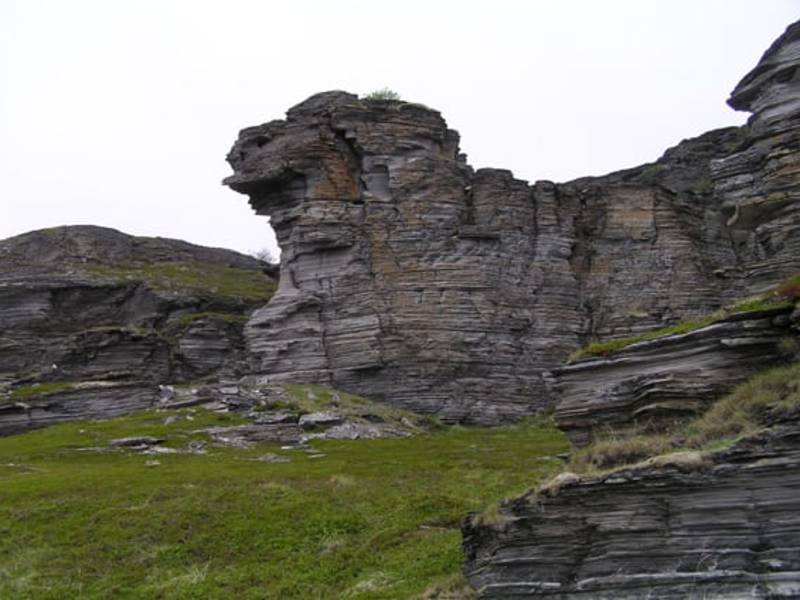
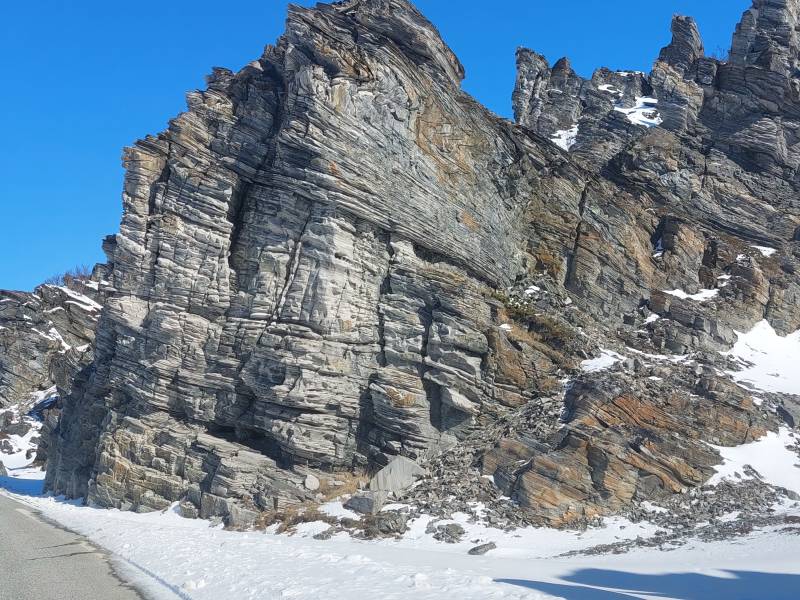
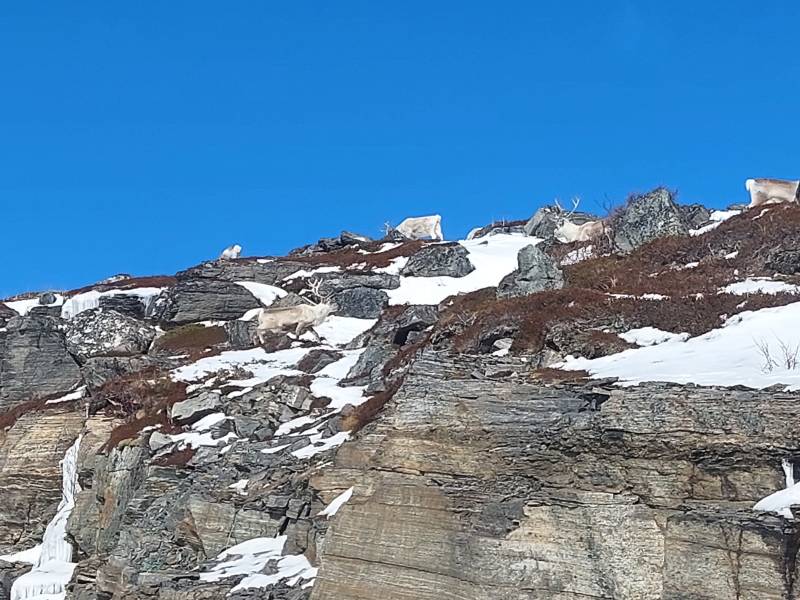
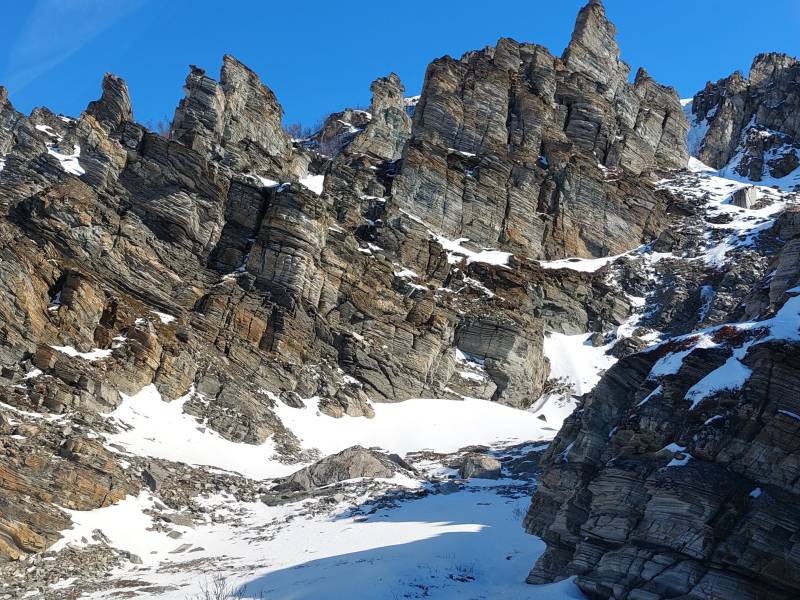
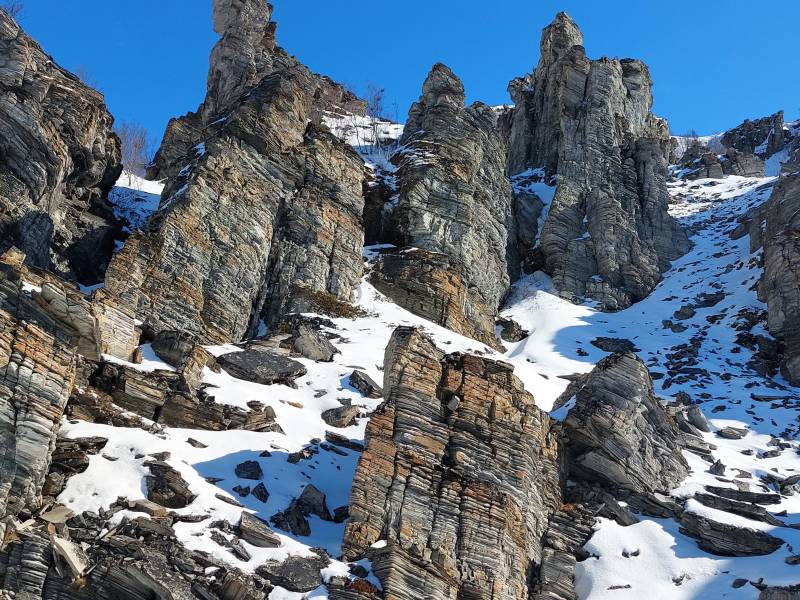
#4
The Sphinx
Du har sikkert lagt merke til de fascinerende og flotte steinformasjonene som vi passerer. Dersom du følger ekstra nøye med akkurat nå, så vil du snart få se noe som egentlig forventes å ligge 83 timer lenger unna i bil, nemlig en gedigen, men også litt forunderlig Sfinx, som er nokså lik den som finnes utenfor Kairo. Den kalles selvfølgelig for Sfinxen, men går også under det klingende navnet «Måsøyløven». You will definitely have noticed the large fascinating rock formations that we are passing. If you pay extra attention right now, you will soon see something that you would expect to see 83 hours away by car, namely a large and marvellous sphinx, which is quite similar to that found outside Cairo. It is of course called the sphinx, but also goes by the nick name «The Måsøy Lion». The figure is made from the most common shale like rock found in the area and was formed after the previous ice age. During the second world war, a family sheltered here from the Nazis for two months. This and other stories that took place during the dramatic war era in Kokelv and the surrounding area, have been collected by the eyewitness Elvine Wiig, in her own book “Flukt”. There is an ongoing quest to find more exotic animals in the rock formations. Many have spotted wolves and foxes, and if you see a pink elephant at sunset, then just shout out.
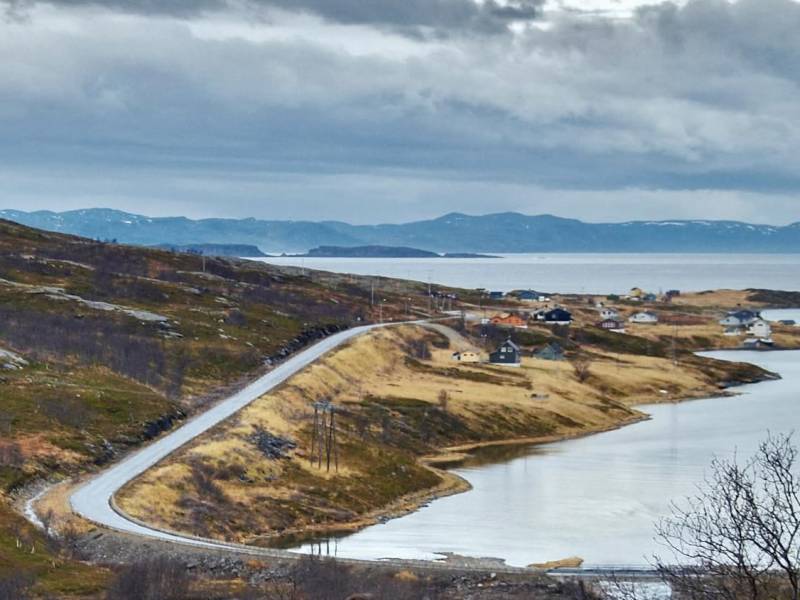
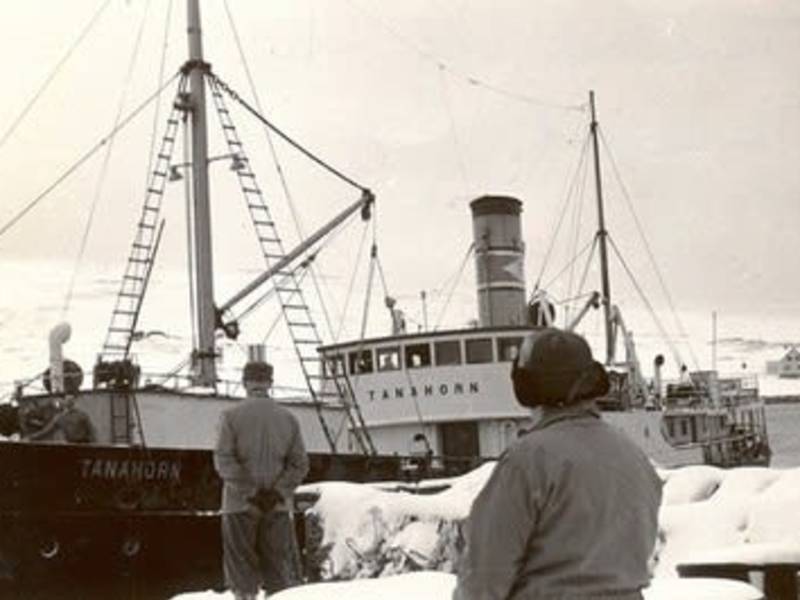
#5
Lillefjord
Lillefjord is a small village in Måsøy municipality with only a handful of permanent residents. Previously, it was a thriving coastal Sami fishing village with lots of activity. Here the sun shines 24 hours a day around mid-summer, and in the dark winter there is a very good chance of seeing the northern lights. There was without a doubt, more activity here in the olden days, and before the road arrived here in 1973, it was boats that were the main mode of transport if it was a longer stretch to be travelled. At that time, there was also a separate mail boat from Havøysund which stopped here and at other places in the fjord, and at those times the whole village would turn out for the unloading of the mail off the boat. The village follows the bay round to the 65-meter-deep Lille fjord, where the idyllic Jordholemen lies and keeps guard in the middle of the landscape. Innermost in the bay there is a national tourist road rest area. Don’t read: In the picture you can see the dispatch of the mailboat Tanahorn in 1960.
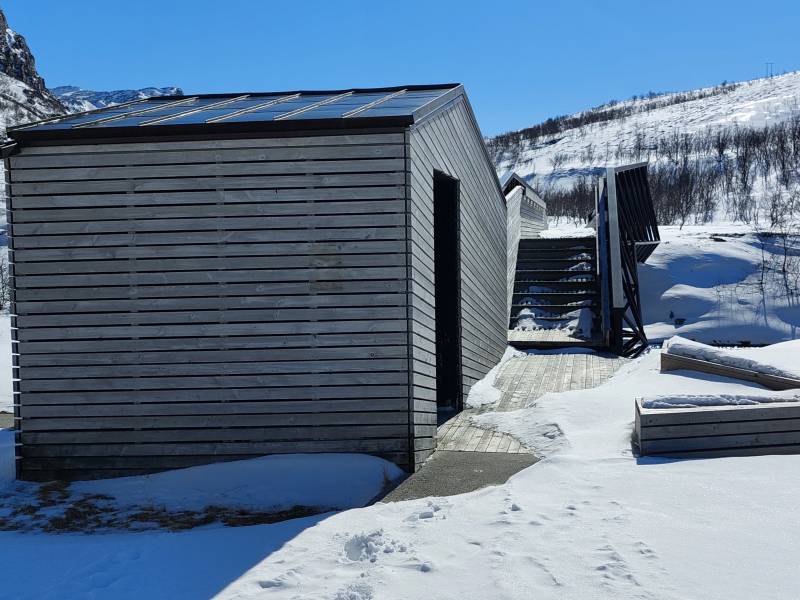



#6
Foss River
We are now arriving at the rest area in Lillefjord. Here the wild Foss River runs out into Lillefjord, with such a speed that the current maybe doesn’t stop before it reaches Greenland. The newly built pedestrian bridge at the rest area above the Foss River is designed with a built-in shelter, toilets and comfortable benches. The footbridge also marks the start of the love trail along the Foss River, which leads up to "Love Bench" by the beautiful waterfall in Lillefjord. The lovely waterfall with a drop of around 50 meters is a popular photo opportunity, preferably with some bathing nymphs splashing around in the pool below. We highly recommend taking a romantic walk in the fresh sea air with a lovely panoramic view. The hike of just under 500 meters with a small ascent can be done in under 30 minutes. Of course, how long it takes depends on what you do when you arrive at the love bench. But we're not going to speculate about that. We will leave that to the imagination. God tur!
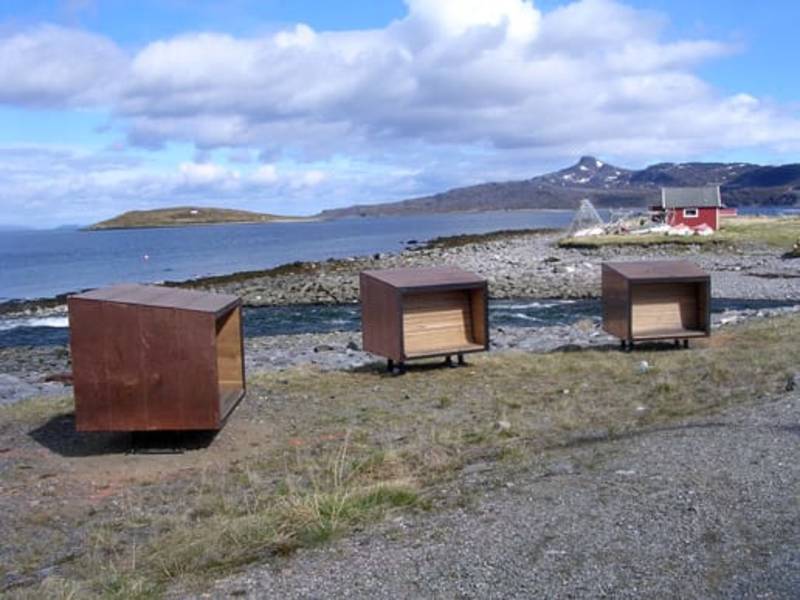
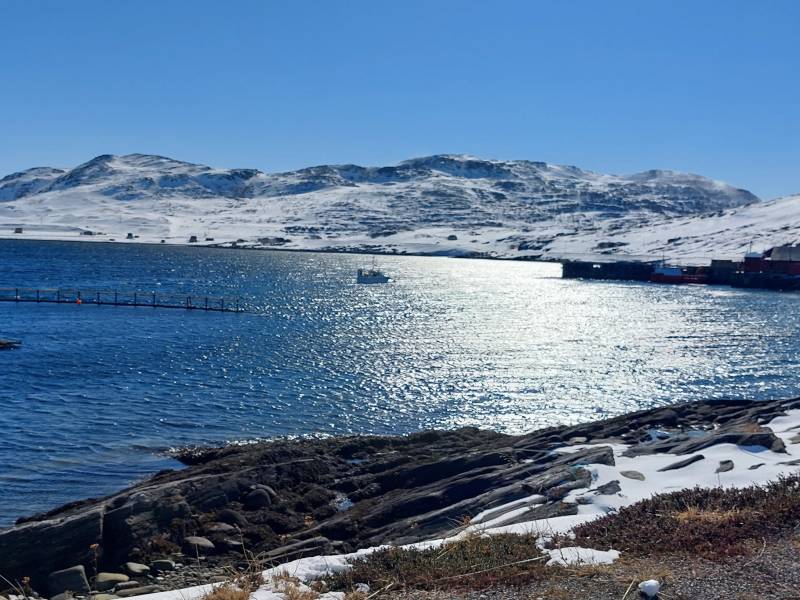
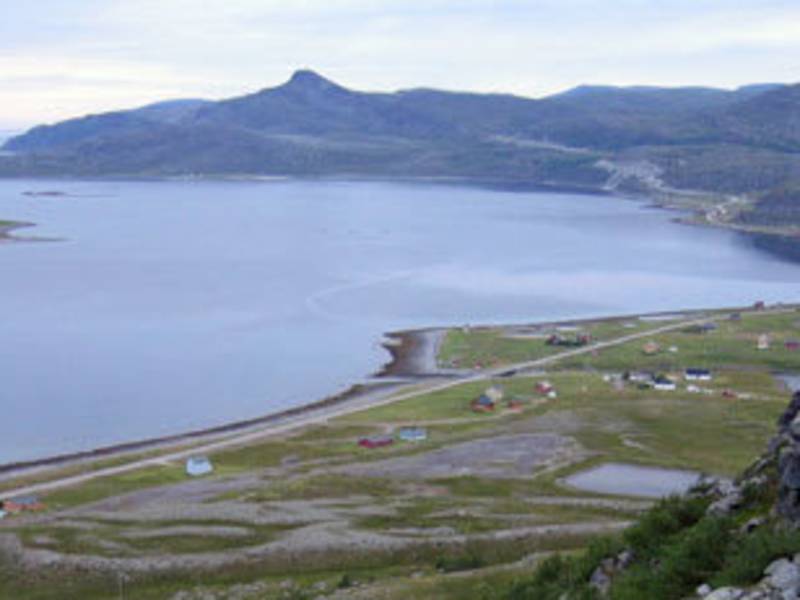
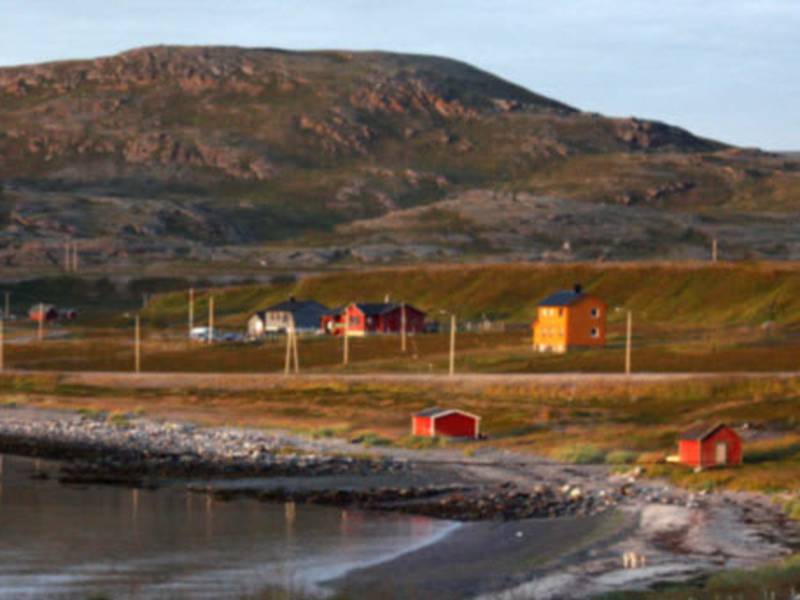
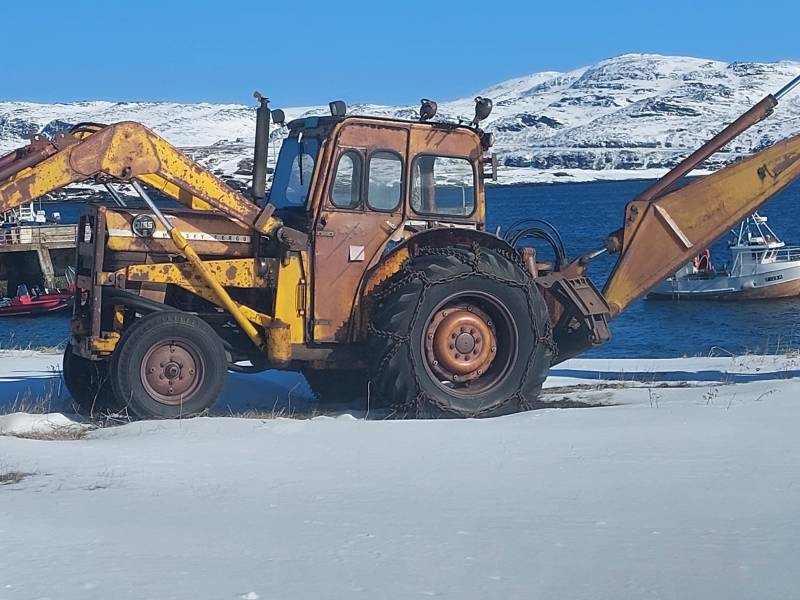
#7
Snefjord
Welcome to Snefjord! It has been bustling with life for hundreds of years and fishing has been the main industry to this day. If there were not enough fish in the sea before, several fish farms have been established out in the beautiful Snefjord. And in the middle of this fjord lies the idyllic pearl, Snefjordholmen. The village consists mostly of pensioners now, but has previously had a post office, tavern, bank, shop, school and a fish farm. Although these have disappeared, the village has several active associations that organize various gatherings for both residents and other visitors and tourists The village was quite isolated until 1976. When a ferry connection was established with Havøysund. The county road to Kokelv opened the year before, but It was not until 1988 that the road to Havøysund was opened and the ferry route closed. Today, tourists visit the beautiful village in search of experiences, both visual and physical. Many people also try their luck in the beautiful Snefjord river, where salmon, sea trout and sea char can be caught. The village is also the location of the annual festival ‘The Snefjord Highland Games’, where the main objective is the dissemination of Sami and Scottish art and culture.
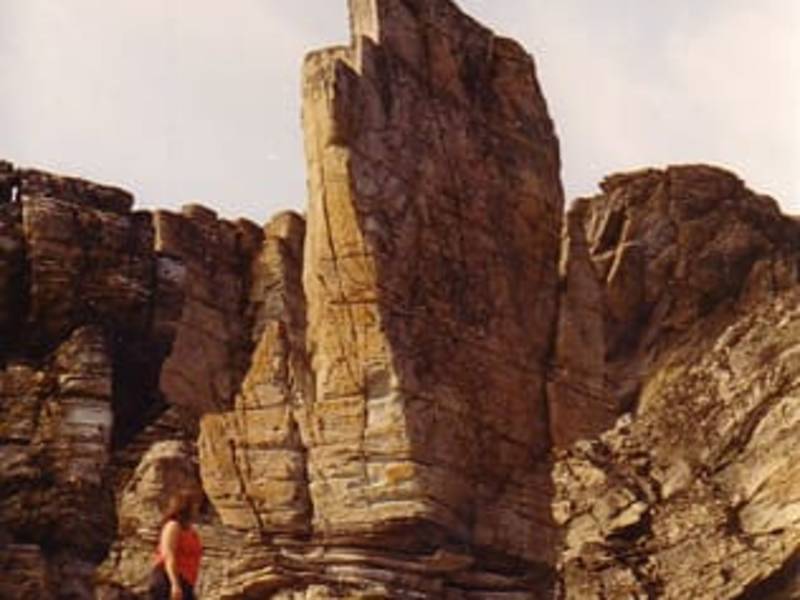
#8
Laughter
Finnmarkers do not have to go out of their way to find a funny story, and the laughter comes easily. Especially in this area! We're passing Latter which means Laughter! The bay to the east is called Laughter Bay and many dramatic things have happened here. In 2012, a large Humpback whale of about 6 meters (20 feet) beached itself in Laughter Bay. Many claimed at the time that it laughed itself to death. Today, such events are not so common and making fun of them something many people might frown upon. Although over the years stranded whales, have been seen as a resource and as a valuable supplement to the diet. Therefore, stranded whales are mentioned in both old Norwegian and Sami laws. According to the Land Act of 1274, the King was entitled to half of the beached whales, while in the early 18th century the various Sámi parliaments divided the rights on the whale carcasses. Towards the north you can see Bestemorbukta ‘Granny Bay’, and not far away is a 12-metre-high stone, shaped like a bauta with human features, perhaps a grandmother? The old Sami community valued old wives and grandmothers highly, and the stone was named Áhku, but is also called the "Granny Stone" in Norwegian. It was once said to have been a Sami sacrificial stone. (perhaps where they sacrificed salmon heads?)
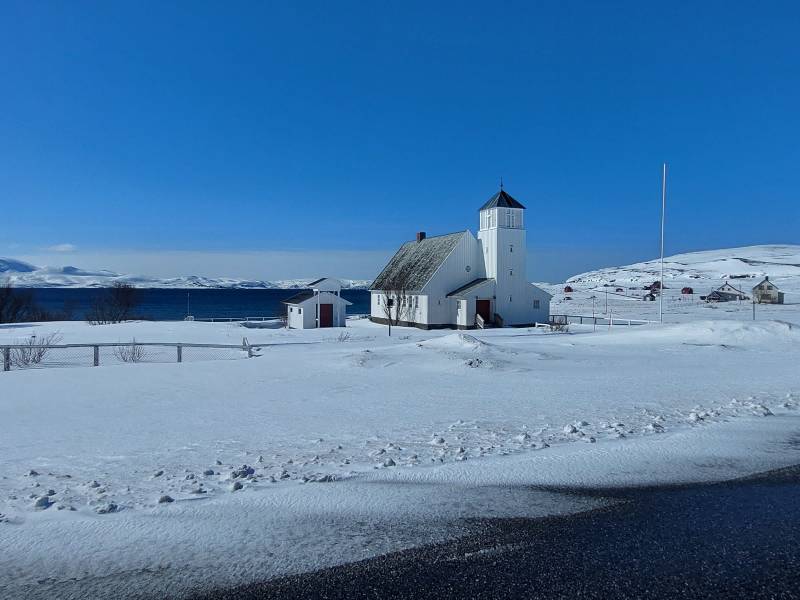
#9
Slåtten
Welcome to the little village of Slåtten which stretches itself around Slåtten bay, with Daumanneset and Avneset at its outermost points and Slotten church at the innermost part of the bay. The church was rebuilt in 1963 after the burning of Finnmark in 1944. The village only got electric lighting for the first time in 1956 and a permanent road connection in 1975, when the stretch of road between Kokelv and Snefjord was opened. In 1948 there was a big celebration in the village when Slåtten post office was opened and the residents were able to regularly send mail with the Vest-Finnmark postal service, also known as the Snøfjord route, right up until 1966.
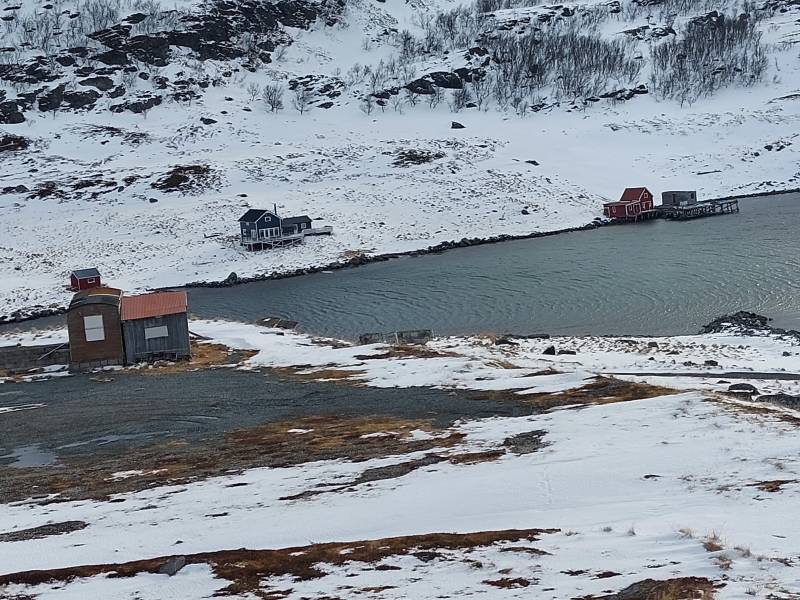
#10
Bakfjord
You have now arrived at the tiny village of Bakfjord, the hometown of the spy whose name was on everyone’s lips in 1967, Selmer Nilsen. The village lies in the innermost part of Varnes Bay in the 137-metre-deep arm of the Bakfjord. At the very heart of the bay there is a little sound leading to the idyllic Pollen bay, which is an Eldorado for crabbing and shell hunting, and for those who like to take a dip in the summertime. If it was only Selmer Nilsen who had brought the rugged but beautiful village disgrace, it might have turned out fine, but Bakfjord is full of stories straight out of the X files. During a violent storm in 1925 four men were lost at sea, their boat ‘Lommen’ was recovered shortly after floating near the shore and was towed to Honningsvåg. The year after a body was found buried under a stone wall in Bakfjorden, and then the rumours began to circulate about both murder and robbery! We will not reveal the answer to the mystery here, but you can find out what happened if you read the book ‘The Bakfjord Mystery’. Another mystery is the case of the unlucky farmer in Bakfjord who lost his gold wedding ring shortly after getting married in 1952. For 54 years he searched for it, before he found it again well hidden under a solid layer of peat. Afterwards, he smugly proclaimed, you can’t sit and stare at the sea if you want to solve the case.



#11
Selvika
We are now in Selvika, you may not see many houses here now, but there have been people living here for thousands of years, subsisting on what nature had to offer. The beautiful monument houses the rest area, which will leave a lasting impression on you, through the beautiful view, the delicious fresh sea air and the animal sounds that blend with the gusts of wind from the fjord. The beautiful sandy beach tempts many eager swimmers, but it is doubtful that that was what enticed the first people to live here. Archaeological finds have confirmed 34 dwellings or buildings on both sides of the road, dating right back from the early stone age up to the 20th century. There are two hiking trails with display boards showing archaeological maps and explanations of the finds. The municipality organise yearly beach cleaning both here and in many other places and encourages visitors to use the marked trails and leave the area litter free. The architects who designed the rest place, The architect consultancy Reiulf Ramstad, in 2013 won the architecture prize ‘Betongtavlen’. In their design they emphasise the universal availability of the beautiful and rugged landscape all the way down to the wonderful beach.
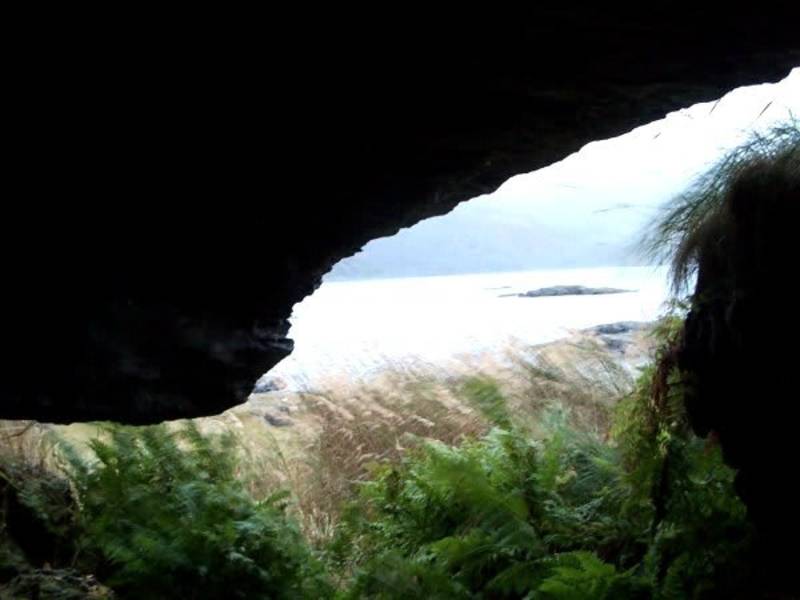
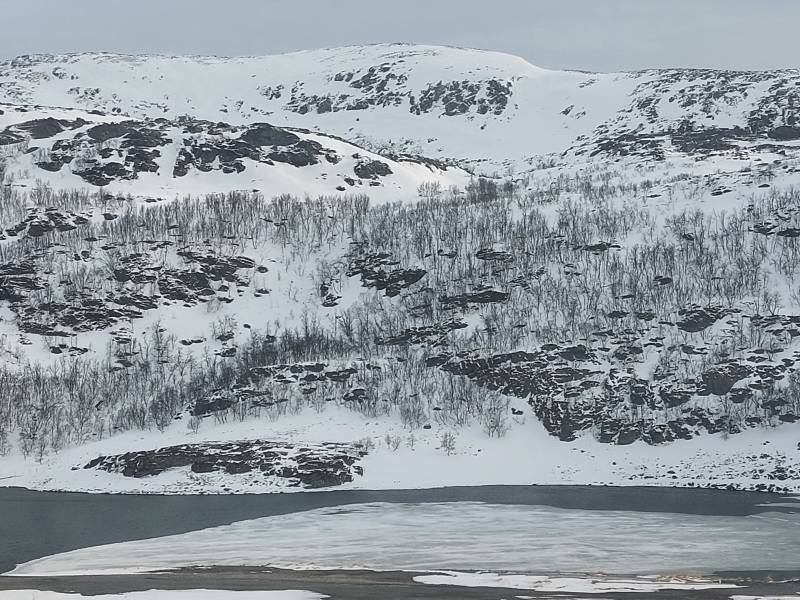
#12
The Resistance on Hesten
We are now passing Heastajávri lake, or Hestevannet (horse lake) as it is known in Norwegian. On the other side you can see Hesten mountain where allied resistance fighters erected a radio mast during the second world war. On the 7th of October 1943, three resistance fighters, one Norwegian and two Russians, came ashore from a submarine on the other side of the mountain, with them, they had all the equipment they needed to build a radio transmitter. They also had 2,5 tons of provisions and of course a little vodka. Unfortunately, a sudden storm washed most of the provisions and a lot of the equipment out to sea, but they managed to save the radio transmitter and the batteries. The three, established themselves in a cave on the mountainside, where they had a good overview of all the traffic through Rolvsøy sound. They placed the radio transmitter up on the Hesten mountain and were able to establish good contact with Murmansk and sent a steady stream of messages to the east detailing the Germans’ activity. Since most of their provisions were lost, they soon had a lack of food and hunger set in for the three in the cave, the situation soon became critical. They eventually came into contact with the Nilsen Family in Bakfjord, from whom they received both food and shelter, despite the fact that the Nilsen family were putting themselves in the utmost danger in doing so. It was thanks to the Nilsen Family here in Bakfjord that the resistance group survived.




#13
Havøya
You have now arrived at the adventurous Havøya, the centre of Havøysund municipality which lies at exactly 71°north. Fish and the fishing industry have been the driving force behind this community throughout the ages. you can find here shipowners, factories, dry docks and the world’s most northerly klipp fish factory which safeguards the entire value chain of the fish. Tourism also thrives here, with good reason. The beautiful and wild nature of Finnmark is a vision that will attach itself to your retina for ever. You can also find a good assortment of shops, accommodation, and other amenities. As the centre of administration for Måsøy municipality all the necessary public services can be found here in the immediate vicinity. Havøysund also has daily calls from the hurtigruten, bus connections to the mainland and further on to the whole world, and fast ferry connections to the rest of the archipelago. In short, in Havøysund you can find everything you need, especially good harbours. The residents love their island and have many active associations covering a variety of interests. Here you can easily get to the island’s outer points which will give you a spectacular view out to the neighbouring islands that stretch out towards the Arctic Ocean.

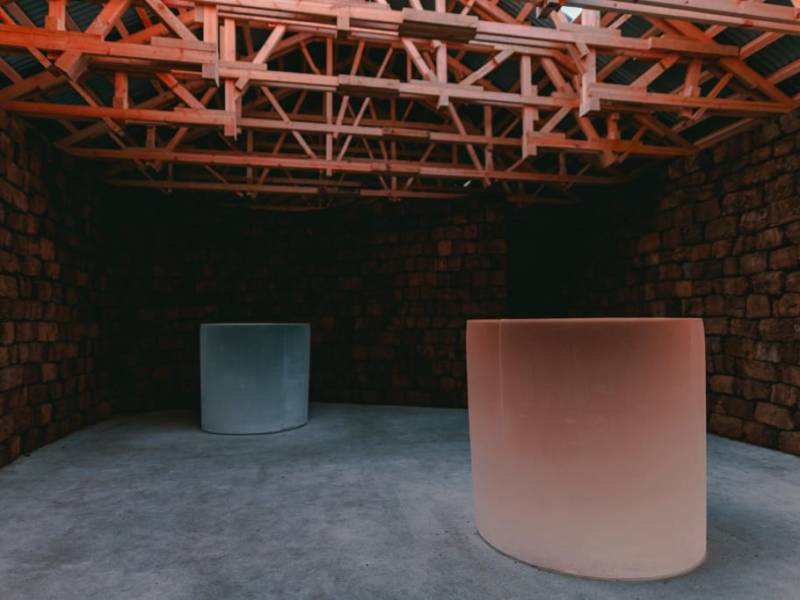
#14
Havøysund Art
“I hated the mountains and the hills, the rivers and the rain. I hated the sunsets of whatever colour; I hated its beauty and its magic and the secret I would never know. I hated its indifference and the cruelty which was part of its loveliness.” Jean Rhys’ famous quote from the Sargasso Sea in 1966 is a fitting introduction to this bare, but beautiful building that you now see in front of you, which is integrated into the artwork within, housing two monumental glass objects weighing 4,9 tons. The renowned artist, Roni Horn, who on a daily basis holds art exhibitions in all the world’s great cities, was inspired by little Havøysund that juts out into the magnificent sea. One of the glass objects is cool with a blueish tint, whilst the other is a warm peach colour. The objects symbolise and exude silence in this harsh but beautiful part of the world, where the variation in light, midnight sun, northern lights, and long winter darkness, constantly create new moods. The National Tourist Road wanted to install an art installation here in Havøysund because this is literally the end of the road. The road out here showcases breath-taking scenery, but if you want to travel further, you will have to take the boat. Roni Horn’s artwork invites visitors to continue the journey in their imagination.

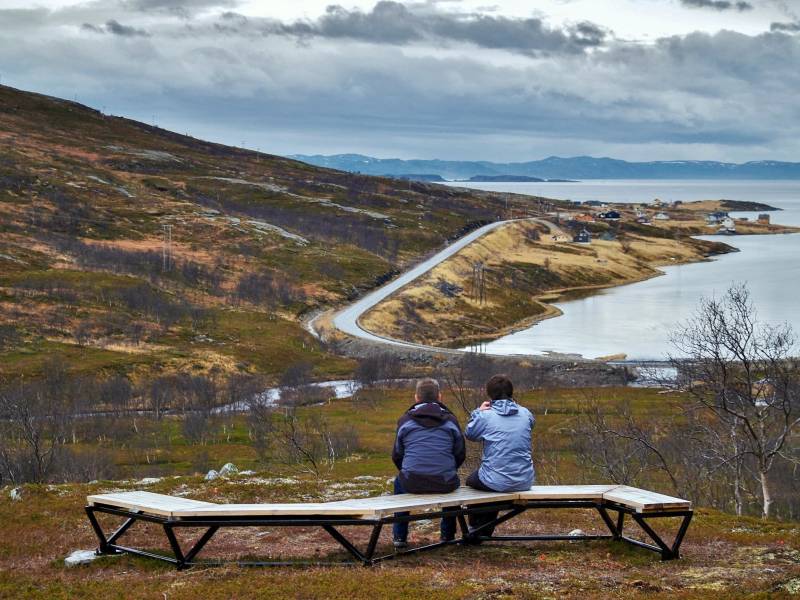
#15
Introduction
Few stretches of road in the world can present such beautiful, varied, and spectacular nature as the National Tourist Road 889 between Kokelv, Storberget and Hammerfest. The journey alone is an experience in itself and combined with a round tour to Nordkapp or Hammerfest, it will be an unforgettable experience that will remain with you for the rest of your life. Parts of the road pass through deserted rocky landscapes, where you have the Nordic Sea on one side and rugged rock formations on the other. The landscape is raw and dramatic and both reindeer and sea eagles are a common sight. In this audio guide you will get to know about some of the places along the road, about spies, the resistance and the people, myths, and sagas from a bygone era. All of this you can experience through the comprehensive narration, pictures, and text as you approach the places of interest along the route. God tur!